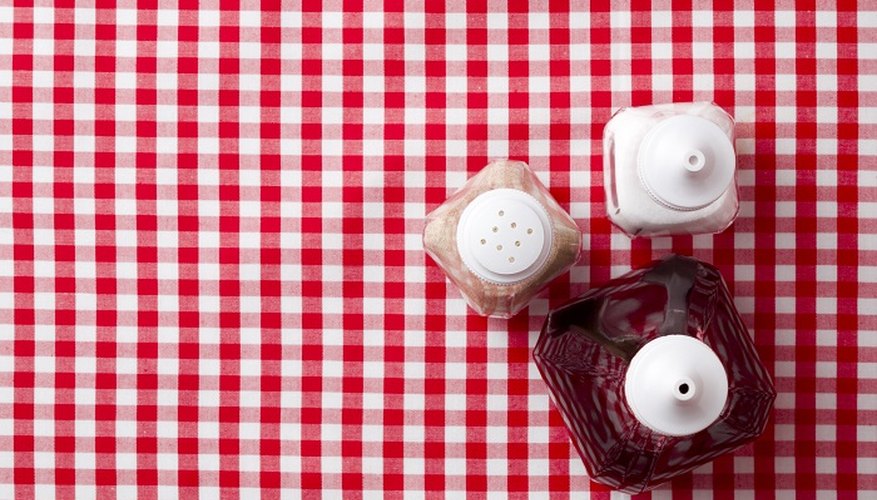Malt vinegar is a common condiment that has many uses, including splashing over your fish and chips. It derives its name from its ingredients -- it's made from malted barley or oats.
While malt vinegar is traditionally produced from these raw ingredients, those looking for a short cut have found it brews up just as well from a can or two of beer. You can learn how to make malt vinegar in a few steps.
- Malt vinegar is a common condiment that has many uses, including splashing over your fish and chips.
- While malt vinegar is traditionally produced from these raw ingredients, those looking for a short cut have found it brews up just as well from a can or two of beer.
Pick your starter beer. Malt vinegar is made from grains such as oats or barley. Allow the beer to sit in the open air for 24 hours to come to room temperature and evaporate any preservative sulphides.
Add bacteria. While simply leaving your beer open to the air can introduce the necessary bacteria, it's best to add it by introducing some unpasteurised vinegar into the beer or purchasing a "mother." Mothers are bacteria colonies drawn from previous vinegar making. Your vinegar will produce its own mother before you are finished. If you are considering making more, you may wish to preserve your mother.
- While simply leaving your beer open to the air can introduce the necessary bacteria, it's best to add it by introducing some unpasteurised vinegar into the beer or purchasing a "mother."
- If you are considering making more, you may wish to preserve your mother.
Cover the container, but don't seal it as the bacteria need air to grow. However, you do want to seal out bugs. Secure a piece of cheesecloth or paper towels over the top of your container using rubber bands to hold it in place.
Store the container in a dark, warm place. Too much sunlight will kill the bacteria. As far as warmth goes, bacteria survive best between 7 and 32 degrees C (45F to 90F). At 60 degrees C (140F), the bacteria will die. Check the amount of alcohol in your beer on the manufacturer's website or by using an online beer directory (see Resources). This will tell you approximately how long your vinegar will take to ferment; typically this is one week to convert one per cent of alcohol into one per cent acetic acid.
- Store the container in a dark, warm place.
- At 60 degrees C (140F), the bacteria will die.
Taste test the vinegar. In order to know how strong your vinegar is, you are going to have to taste. Just a little is enough to get a feel for it.
Strain it. Use a couple of coffee filters to pour your vinegar into a new container. This pulls the mother off the top.
- Use a couple of coffee filters to pour your vinegar into a new container.
Pasteurise the vinegar. You can do this by heating the vinegar to at least 60 degrees C (140F) but no more than 70 degrees C (160F) for 30 minutes. Then pour it into sterilised bottles. This will preserve your vinegar indefinitely.
TIP
Use a dark-coloured container made of either glass or ceramics that has a spout. The dark colour helps keep the light out, while glass and ceramics have less of a chance of reacting with your newly made vinegar. The spout just makes it easier to pour.
When choosing your beer, pay attention to the alcohol by volume content. The best vinegar bases are between five and seven per cent alcohol by volume.
While your vinegar is ready to use immediately, it's best to bottle it and let it age for six months before using to mellow out the taste.
If you want to preserve your vinegar mother for future use, just scoop it and some of the vinegar out and transfer it to a different container. Keep in mind that you have to feed it in order for it to remain alive, so only do this if you're going to be making another batch very soon.
WARNING
During taste tests, do not consume the filmy substance floating on the top. That is the mother, and it is nothing but bacteria, which can cause an adverse reaction.
Mould may grow in your vinegar, so be on the lookout for white, grey or black substances growing on top of your vinegar mother. If this happens, discard the entire project immediately and sterilise your brewing vessel.
